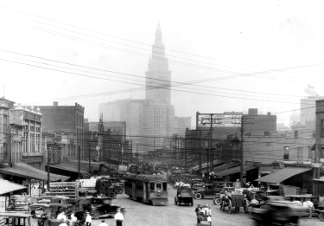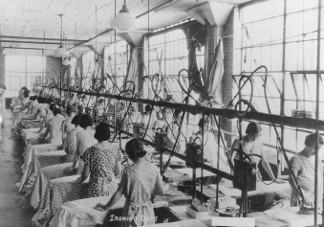EISENMANN, JOHN (26 Mar. 1851-6 Jan. 1924), architect of the ARCADE and author of Cleveland's first comprehensive building code, was born in Detroit, son of Christian and Anna (Schubert) Eisenmann. He graduated from the University of Michigan in 1871, and headed the U.S. geodetic survey of the Great Lakes and St. Lawrence and Mississippi rivers until contracting jaundice and being forced to take a 2-year leave of absence. He then studied architecture at the polytechnics of Munich and Stuttgart, graduating from the latter institution, before returning to his former post. He came to Cleveland in 1882 as professor of civil engineering at Case School of Applied Science. When Case moved to UNIVERSITY CIRCLE, Eisenmann drew plans for the first building (1885). In 1880-90 he designed, with SOUTHWEST GENERAL HOSPITAL, the Arcade; and in 1904, under Mayor TOM L. JOHNSON†, Eisenmann wrote Cleveland's first comprehensive building code (see BUILDING CODE OF 1904).
Eisenmann, a member of the Wade Park Commission, participated in planning the Wade Park area. He is also credited with designing the Ohio state flag. A pioneer of structural-steel construction, Eisenmann invented and patented "Mannel," a hollow building tile. Upon his death in 1924, his widow, Anna M., revealed Eisenmann had mortgaged their home to raise funds to draw up plans for the Perry Memorial at Put-in-Bay. However, another plan had been chosen, and, disappointed, Eisenmann began failing in health. Before he died, he requested that his ashes be scattered from the top of the Perry monument.
Last Modified: 15 Jul 1997 04:30:12 PMYoung, Herbert R. "John Eisenmann, First Case Professor of Civil Engineering and Drawing" (1962, WRHS).
- Related Article(s)









